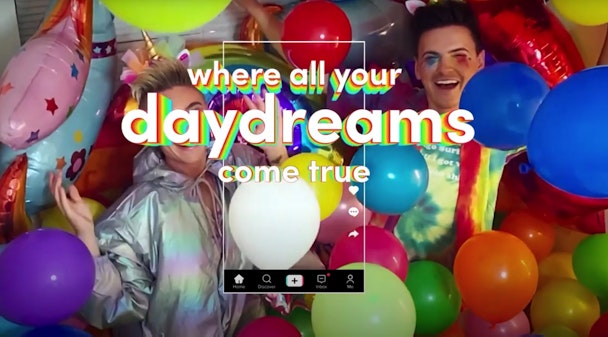Customers like ads on TikTok, but marketers prefer YouTube
Kantar has unleashed the results of its survey of 4,000 consumers and over 700 senior marketers, with social video app TikTok propelled to the inaugural top spot of its first ever Global Ad Equity rankings, closely followed by Instagram, Snapchat, Google and Twitter.

Marketers and consumers are at odds about ad placement - with TikTok coming out on top for the latter
The study highlights a dichotomy between marketers’ preference for established digital platforms, such as YouTube, while consumers prefer newer platforms.
Marketers and consumers are at odds about ad placement
-
Assessing the full panoply of global digital platforms, Kantar awarded TikTok with its highest global ad equity rank – a measurement of consumer attitudes toward advertising in different environments based on 11 variables.
-
In hot pursuit were Instagram, Snapchat, Google and Twitter, which claimed second through fifth spots respectively.
-
Overall, the principle ad equity metric was found to be higher for global digital media brands than for local offline media brands, indicating that widely publicised brand safety concerns haven’t impacted sentiment.
-
Interestingly, the study unearthed a discrepancy between consumers – who favour advertising on fresher platforms such as TikTok – and marketers – who favour more established brands such as YouTube.
-
This divide extends to preferred channels, with consumers prioritising cinema ads, sponsored events, magazine ads, digital out-of-home and newspapers (in that order). In stark contrast, the marketing industry prioritises online video, TV, social media news feeds, streaming TV and social media stories.
-
While online formats remain less popular than offline formats, attitudes shift among consumers of influencer branded content, podcast ads and streaming TV ads.
-
TV and video advertising remain the big beasts of ad exposure, although consumers hold polarised views on specific formats with some regarded as fun and relevant while others are disparaged for saturation and repetition.
-
The marketing community continues to target the bulk of its efforts at digital engagement in direct conflict with consumers who favour offline ads.
What does it mean?
-
All this suggests marketers have become over-reliant on digital channels, falling out of step with consumers who still perceive offline mediums as being better quality, more trustworthy, less intrusive and untargeted.
-
The divergence between marketers and consumers on newer and established platforms could indicate marketer bias towards data that can help target ads, optimise campaigns and demonstrate return on investment (ROI).
-
The pandemic has already seen 60% of businesses shrink marketing spend – significantly so in the case of 30% – resulting in a greater focus on brand purpose and digital transformation.
-
As a result of these shifts, marketers now favour campaign appropriateness and advertising receptivity over ROI and costs.
-
Unsurprisingly, the proportion of resources allocated to digital channels has risen in response to the pandemic.
-
These shifts are likely to accelerate further in 2021, particularly in the case of online video, with YouTube, Instagram, TikTok and Google likely to be the chief beneficiaries.
-
TV is also expected to make a comeback alongside digital out-of-home, although the future looks less rosy for the majority of offline media.
-
Duncan Southgate, global brand director of media at Kantar, said: “The rush to digital is understandable because of targeting and measurement capabilities, but saturation, repetition and over-targeting in some environments can make this counterproductive.“
-
He added: “Advertisers and agencies need to develop a more quantified understanding of ‘medium as message’ and the impact different media channels and platform choices can have on their brand goals.“
-
Addressing media platforms directly, Southgate recommends “delivering regular innovation in advertising formats to satisfy marketer needs, while still keeping consumers entertained and paying attention“.
Content created with:

Kantar Media
Find out more
